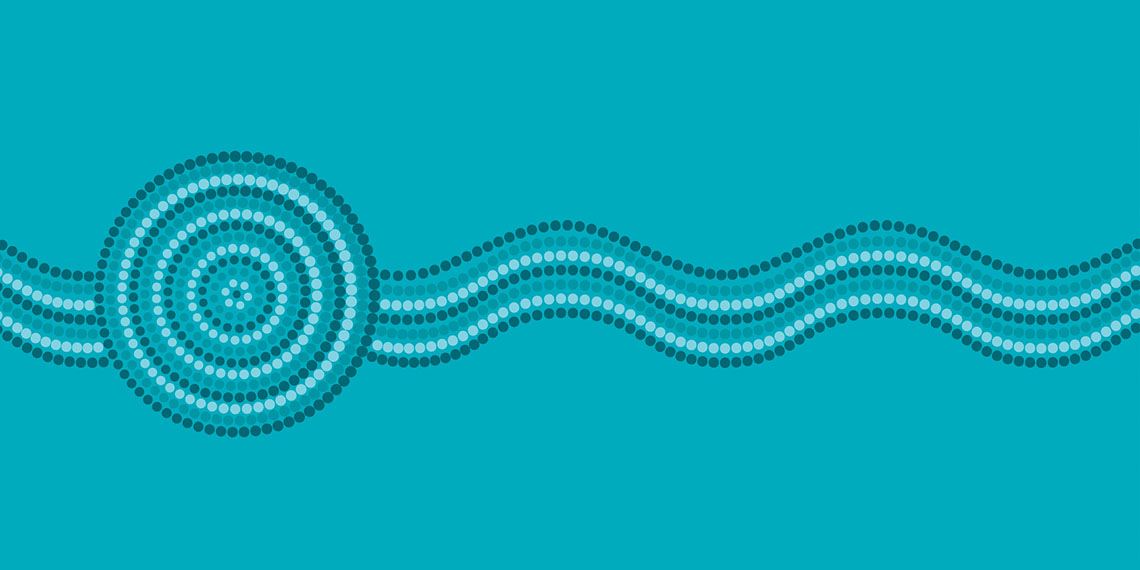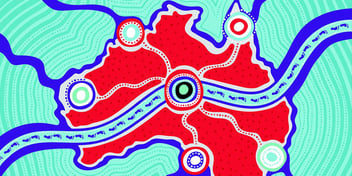Moving beyond Reconciliation Action Plans

As the Australian water community continues on the pathway towards reconciliation, one leading consultancy is leaning into lessons learned and making the changes necessary to meet more ambitious goals.
The theme of this year's National Reconciliation Week (27 May–3 June), "Be Brave. Make Change." encourages all Australian communities and organisations to commit to reconciliation with accountability under bold actions, and GHD is doing just that.
Having launched its first Reflect Reconciliation Action Plan (RAP) in 2017, and its Innovate RAP in 2018, GHD has made considerable progress in bolstering cultural awareness and Indigenous employment and procurement — within the company and the communities it serves.
Despite this, GHD Indigenous Services Operations Manager Patrick Maiden said the company decided to redo its Innovate RAP in pursuit of ensuring every commitment was genuinely met before moving on to the Stretch stage of the RAP journey as defined by Reconciliation Australia.
“The first thing we did when we came to the end of our Innovate RAP was take a really close look at how we had performed against our previous commitments,” he said.
“While we did really well with some of our commitments, we recognised we could do better in other areas. And importantly, we realised we weren't set up to fully achieve some of our goals. We hadn’t made some necessary changes in the organisation to meet them effectively.
“So in close consultation with Reconciliation Australia, we made the decision to have another go at our Innovate RAP and commit to doubling down on the commitments that needed more work, rather than move into a Stretch RAP unprepared.”
While GHD made considerable progress with cultural awareness training, the company realised it needed to set clearer targets around employment and procurement, and get better at measuring success.
“Employment and procurement are key areas of focus for us when it comes to ensuring we are genuinely providing Aboriginal and Torres Strait Islander peoples with representation and participation within our business and sector,” Maiden said.
“In order to really challenge GHD, we decided to be bold and set some very specific targets within these key focus areas.”
Furthermore, Maiden said GHD wanted to ensure the RAP commitments were met in the company's regional and rural locations.
“We want to have a mature, national approach to our commitments, not just focus where our major hubs are. We want to raise the bar across the board, so that all our teams are operating on the same level and have access to the same opportunities,” he said.
Getting specific
While GHD’s new Innovate RAP is similar in some areas to its previous RAP, there are some crucial differences, Maiden said, which focus on ensuring the commitments are actionable.
“The biggest change we've made in this RAP is in setting clear, numerical targets. We had a lot of good intentions with our previous RAP. But now, for example, we've set a target for 2.5% of our workforce to be Aboriginal or Torres Strait Islander people,” he said.
“Essentially, within two years we intend to double the level of Indigenous employment within GHD in Australia. We've got more than 60 Aboriginal and Torres Strait Islander employees currently, and we intend to have 120 in two years.
“We know this is going to be a challenge for us. But we are going to give it everything we’ve got.”
Maiden said one thing GHD will do to boost employment is to create more opportunities.
“We have recently created new positions around Indigenous engagement, business relationships and marketing, and procurement management,” he said.
One important hire GHD has recently made is the appointment of a new Indigenous Talent Acquisition and People Partner, with the role focused on recruitment, as well as the application of targeted talent strategy and policy within the business.
GHD's acting Indigenous Business Relationships and Procurement Advisor Krystal Coyne said these types of roles are crucial within businesses looking to enhance Indigenous employment, as they help to generate and maintain cultural safety.
“We recognise that effective Indigenous employment and talent acquisition requires special attention,” Coyne said.
“We’re already working with our talent acquisition team at GHD to create job advertisements and position descriptions that are relevant and appropriate to the candidates we want to attract.
“It’s about making it as easy as possible for Aboriginal and Torres Strait Islander people from any area of Australia to apply and to communicate with us openly.
“But the hiring process is just the beginning; retention is just as important. We need to ensure cultural safety within our workplaces, making sure our Indigenous employees feel they belong and empowered if we want to attract the exceptional talent, and deliver on our commitment to create lasting community benefit.”
To this end, GHD has an internal network designed for our people who identify as Aboriginal and Torres Strait islander to help bolster cultural safety.
“Since I started with GHD, the network has become really important for me as a Torres Strait Islander woman. Having a safe workplace where I feel accepted and free to share is very important to me,” Coyne said.
In order to meet its Indigenous employment targets, Maiden said GHD is seeking to leverage its strong regional presence, with the company boasting 44 offices across Australia. GHD leverages this regional presence with its industry partnerships.
“Our strong, long-term relationships with industry partners is a fundamental part of our strategy, with Supply Nation and CareerTrackers being two of our key partners, as well as the GO Foundation in the STEM education space,” he said.
“CareerTrackers provides a great pathway for students to enter the workforce, helping to ensure their career path suits them and provides a foot in the door. And having a regional network of offices allows us to take students who need to have access to Country.
“We are placing students not just in capital cities, but giving them access to our regional offices as well. This flexibility is something we are targeting deliberately to try to work more opportunities into our business for people who want to work closer to home, closer to Country.”
Investing in change
In terms of GHD’s procurement commitments under the new RAP, Maiden said the company has devised an ambitious new goal: to achieve a 25% increase in spending of contracts with Indigenous suppliers moving forward.
“Growing the number of Indigenous businesses in our supply chain is a huge opportunity, especially for technical and professional businesses that can contribute to the important water, energy, transport and community building projects we deliver with our clients. But we needed a robust way of measuring our progress,” he said.
“We set up a finance reporting tool that allowed us to identify all our Indigenous businesses and track our spending with those businesses. We exceeded our initial goal of spending $1 million last year, but the key challenge here is to ensure we keep that momentum to continue to increase our spend by 25% every year.”
To increase further investment, GHD has introduced commitments in its new RAP that aim to create new opportunities for Indigenous businesses via incubation, Maiden said.
“There aren't necessarily Indigenous businesses in every field that we engage with. We need particular types of capability, especially in technical and professional services. But that doesn’t mean we can’t create opportunities for Indigenous businesses who want to expand and grow,” he said.
“We are currently working on identifying opportunities in our supply chain and working with Indigenous businesses to develop their capability to meet those tasks. This work can be in smaller scale projects, but it offers plenty of opportunities for joint ventures on our big projects, too.”
Accounting for accountability
Last year, GHD began an ongoing partnership with Weavr, an Indigenous-owned company that has developed a software to help organisations track progress made under their RAP goals.
“Being able to learn from an Indigenous-owned company, while they in turn learn from us, is such a joy, and something I’m really proud of as an Indigenous employee,” Coyne said.
“Weavr is helping us stay on top of reporting and track our progress. It’s helping us stay in touch with our goals so that we can ensure our RAP isn’t something that just sits on the shelf.”
While GHD certainly has challenges ahead in meeting its new and ambitious RAP goals, Coyne said setting defined targets has helped the organisation create a much more proactive focus on keeping big picture goals front of mind.
“We are looking at the data and reporting on our progress every month. And reflecting on where we are at on a very regular basis is a great motivator,” she said.
“It’s really encouraging to see progress towards the targets, and it also helps us maintain a clear focus on the areas we need to improve.”


